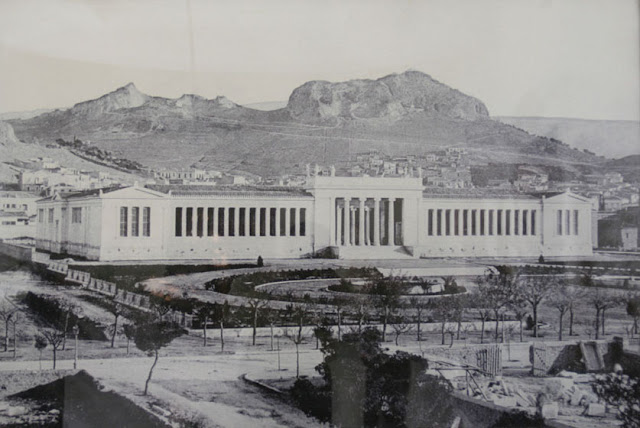The birth of Greece's National Archaeological Museum was first announced on April 27, 1866 by the Chief Guard of Antiquities Zissis Sotiriou - one of the fighters of the independence war of 1821. The announcement notified all Greeks that a new "Museum of All Greeks" was to be erected on the land donated by Eleni Tositsa on Patission Street and also urged anyone hoarding antiquities in their home to donate them, in order to enrich the new museum's collection.

It would take another 23 years, however, for the building to be erected, initially starting with the west wing. The museum is now celebrating the 150th year since its foundation and has planned a series of events throughout the year to mark the anniversary and the sometimes tumultuous course over the last century and a half.
The anniversary falls on 3 October 2016 but various and interesting exhibitions will be held, however, throughout the year, as stated by the director, Maria Lagogiannis during the presentations of the impressive 2016 panorama.
Among the news that stood out was the proclamation, on 18 May (International Museum Day), as the honored museum for 2016 from the Greek section of ICOMOS (International Council of Museums), an honour that is due to its contribution to culture, and the nationwide character of its collections, representing universal values.

From the new exhibitions scheduled we singled out the “Open Museum”, which is centered on openness and dialogue with society, and the involvement of the Museum with the social partners.
“In response to the guests’ request, the museum opens its doors in the spaces behind the stage, in the maintenance workshops and archaeological research areas, where our staff is preparing all the exhibits you watch in brilliant exhibition halls,” said Maria Lagogiannis.
Also, special thematic presentations by archeologists and specially designed familiarization workshops by maintainers will be offered at regular dates throughout the course of 2016, enriching the museum experience and deepening the relationship with the guests.
Meanwhile, from January and throughout the year the museum will feature innovative actions in collaborations with educational institutions, art organizations, unions and social organizations such as the Association of Sculptors, School of Antiquities Conservation and Athens School of Art, Museum of Herakleidon, the Athens State Orchestra, the National Tokyo Western Art Museum, Metropolitan Museum in New York, the National Theatre, the School of Architecture of the NTUA, the National Gallery, the Library of the Hellenic Parliament and National Television.
The final action will join the festive atmosphere of the anniversary exhibition entitled “Odysseys”, which through the unique collections of the museum, that start from the Neolithic period and end in late antiquity will highlight the timeless struggle of human survival, development, acquisition of knowledge and happiness.
At the same time, great modern poets, Cavafy, Seferis, Elytis and Ritsos will hold the thread that will bridge the multiple symbolisms of Homer’s Odyssey and nowadays.
As reported by the Director, the museum in 2015 served 103 research projects, Greek and international, innovative maintenance methods were applied, such as the analysis of the composition of the metal alloy of the Adolescent of Antikythera by spectroscopy X-ray Fluorescence (XRF) and physicochemical investigation of the sculptures of the Antikythera shipwreck with GPR.
Source: ANA-MPA & Ellines.com [May 10, 2016]